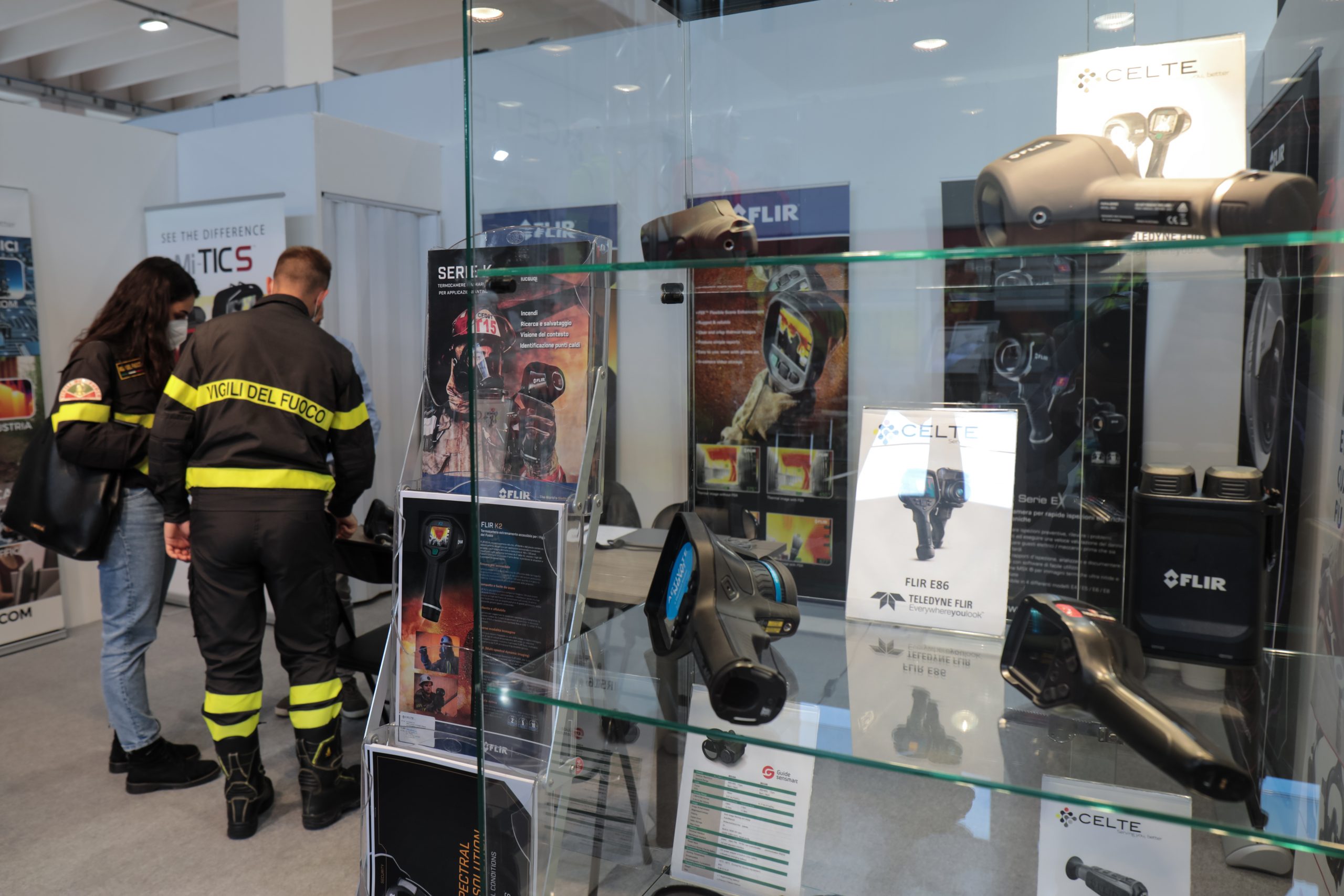
FLIR thermal imaging cameras: Insight Fire Training tips
FLIR, the world’s leading manufacturer of thermal imaging cameras and therefore highly valued by rescue and firefighters, presents some key features of these special cameras
THERMAL IMAGING AND THERMAL CAMERAS: VISIT THE FLIR BOOTH AT EMERGENCY EXPO
After the introduction of innovative thermal imaging cameras and the Ignite Cloud Service, FLIR gives us some important explanations on how they are used, especially for the benefit of firefighters
And it does so through Andy Starnes, the founder of Insight Fire Training, the US company that provides training for firefighters around the world on how to use thermal imaging cameras.
In thermal imaging, and therefore in FLIR cameras, as Insight Fire Training explains, the two most critical attributes are emissivity and distance to spot ratio.
However, these two areas are often overlooked, misunderstood, or shared completely incorrectly with firefighters.
For example, on the FLIR camera, many firefighters tend to read only the numerical temperature reading in the bottom right corner of the viewfinder, otherwise known as the ‘spot temperature’ or direct temperature measurement.
This is a rather dangerous issue: the spot temperature is a numerical representation of the average of a certain number of pixels within the focal point (or viewfinder) of the thermal imaging camera at a distance preset by the manufacturer.
This spot temperature is not an accurate representation of the overall environment.
As can be seen from the first photo, the focus is obviously warmer than 240 degrees Fahrenheit.

But the 240 degree spot temperature of the back wall is a rough calculation of the average pixel temperature within that spot, not an accurate representation of the general environment.
Looking at both photos, one can then see that the environments could be at a temperature higher than 500 degrees Fahrenheit.
In specific jargon, this is what is called ‘reading the palette’.
Firefighters are required, in this case, by means of the FLIR camera, to look at the overall picture
That is, they have to look at the overall incident and see the overall thermal environment.
Spot temperature, illustrates Andy Starnes of Insight Fire Training, is to be used for individual diagnostics (such as overhaul, detection of overheated components, etc.) and not for strategic decision-making.
The spot-to-spot distance ratio can be defined as the ability of the thermal imaging camera to successfully measure a spot temperature (the viewfinder or focal point) from a specific distance.
The effective range that most ICTs, including the FLIR thermal imaging camera, measure accurately is at the focal point, which is typically a 12-inch square.
This can be compared to a torch beam.
As you get closer to the wall with the torch, the beam becomes clearer and more precise.
Whereas, as one moves further away, the spot becomes larger and therefore less precise.
An individual with a TIC should be aware of the distance-to-point ratio of the TIC in order to accurately diagnose the thermal environment and read the entire image, not just the spot temperature.
There are two types of thermography in use today: quantitative and qualitative
We speak of quantitative type when the end user is looking for exact measurements where the parameters can be adjusted to match 2 degrees Celsius.
Whereas, qualitative thermography reads what are known as apparent temperatures, which are estimates due to the lack of adjustment by end users for the following parameters:
A) Focus
– Distance
– Emissivity
– Temperature range
B) Reflected apparent temperature
– Transmissivity
– Ambient temperature
C) Atmospheric attenuation (humidity, wind, etc.).
Furthermore, many firefighters and researchers fail to understand that firefighters’ ICTs are not radiometric devices.
This means that the data is not stored as a radiometric jpeg or video that would allow someone to analyse each pixel as a temperature measurement.
This is the norm for an industrial thermal camera, and therefore also for the FLIR camera, used for quantitative thermography
For example, a firefighter observing a structure at 30 feet can see temperatures at 71 degrees, but when within 10 feet the temperatures are 300 degrees.
This is because IR energy dissipates due to distance and other factors along with the ICT’s ability to effectively ‘see’ within a certain distance. In general, the longer the distance-to-point ratio, the better the resolution.
Firefighters must remember that this measurement is an average of the pixels within that area and, unlike typical thermography-based measurements, there are many variables between the firefighter and the target that, as mentioned earlier, can affect the accuracy of this measurement.
Note on the following slide how the temperature measurement can vary depending on emissivity.

If a firefighter is viewing a stainless steel refrigerator and has a spot temperature reading of 200 degrees Fahrenheit, the actual temperature would be 563 degrees Fahrenheit.
Notice in the Max Fire Box video, what happens when we point the TIC as the shiny diamond-plated surface compared to the inside of the box itself.
In short, low-emissivity objects cannot be trusted.
A firefighter must learn to interpret the image present, in this case on the FLIR camera, based on his knowledge of what he is looking at with a solid understanding of the limitations of what he is looking at.
Read Also:
Emergency Live Even More…Live: Download The New Free App Of Your Newspaper For IOS And Android
Teledyne Flir And Emergency Expo: The Journey Goes On!
Thermal Imaging: Understanding High & Low Sensitivity
Thermal Imaging Always At Your Fingertips With FLIR Ignite Cloud Service



